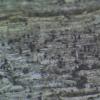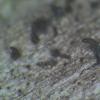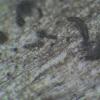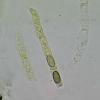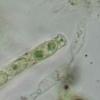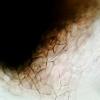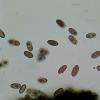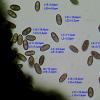
30-12-2025 17:14
 Bernard CLESSE
Bernard CLESSE
Bonjour à toutes et tous,Pourriez-vous aider Albe

29-12-2025 10:15
Hulda Caroline HolteHello, I found and collected this propoloid ascom

30-12-2025 09:04
Hello.A Pyrenomycete sprouting sparsely but very d

12-11-2021 00:03
Lepista ZacariasHi everybody,A week ago in my fiels trip I noticed

29-12-2025 17:12
 Bernard CLESSE
Bernard CLESSE
Bonjour à toutes et tous,Pourriez-vous m'aider à

29-12-2025 17:01
Gernot FriebesHi,I'm looking for help with this hyphomycete with

29-12-2025 08:30
Hello.A tiny ascomycete sprouting under Juniperus

29-12-2025 09:38
Oskari VirtanenHi,could anyone help me identify this, I suspect P
Sordariomycetes
éric ROMERO,
29-12-2025 23:20

Bonjour,
Une récolte du mois d'août 2025 en tourbière (Etang de Hanau - Philippsbourg (57) - France), sur bois indéterminé, bien dégradé (pourriture blanche) et fortement imbu.
Périthèces noirs immergés à long col, jusqu'à 1mm au total.
Asques octosporés, IKI-, environ 60 X 5-6µ.
Spores brunâtres à deux grosses guttules (plus rarement une seule centrale), 10-11 X 5-5,5µ (sur sporée).
Avec la littérature en ma possession, je tourne autour de Natantiella ligneola qui a des spores hyalines...
Merci d'avance pour vos éclairages, éric.
Alain GARDIENNET,
30-12-2025 09:35
Re : Sordariomycetes
Bonjour Eric,
Très probablement un Ceratostomella. Tu devrais trouver la solution dans Reblova et al, 2024, Mycokeys, la dernière mise à jour du genre.
Alain
Très probablement un Ceratostomella. Tu devrais trouver la solution dans Reblova et al, 2024, Mycokeys, la dernière mise à jour du genre.
Alain
éric ROMERO,
30-12-2025 19:03

Re : Sordariomycetes
Bonjour Alain,
Merci beaucoup pour cette piste que j'ai pu découvrir.
J'arriverai à Ceratostomella sordida. Qu'en penses-tu ?
éric.
Alain GARDIENNET,
30-12-2025 23:06
Re : Sordariomycetes
dans ces eaux là, apparemment il n'est pas simple de dénouer les espèces de ce complexe.

